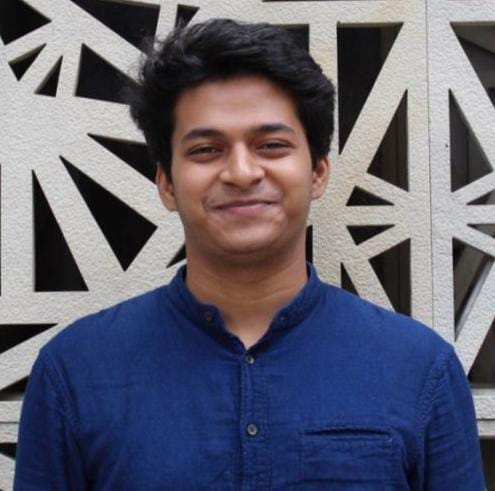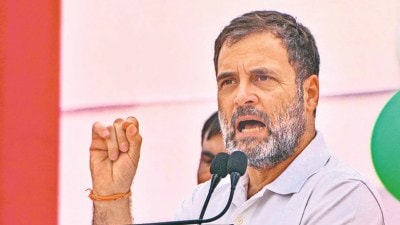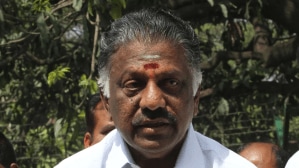Long road to owning a home in Delhi: How a 6-year-old scheme gained pace last November
In 2019, the Centre’s new scheme to regularise unauthorised colonies across Delhi brought hope to several residents who waited years to own their homes legally. In the six years since, the scheme saw little momentum — until it picked up last November
 While details on the exact number of unauthorised colonies and their residents are unavailable, about 50 lakh people stood to benefit from the regularisation of 1,731 colonies (Express)
While details on the exact number of unauthorised colonies and their residents are unavailable, about 50 lakh people stood to benefit from the regularisation of 1,731 colonies (Express)“It is a very lengthy process. Log chakkar laga laga ke thak jaate hai (people get tired going again and again to the centres),” says Rajinder Bhola, a resident of Khirki Extension in South Delhi.
Bhola was referring to the Centre’s ambitious plan to grant property ownership rights in unauthorised colonies, like Khirki, in Delhi.
Six years after its launch, the plan had largely flown under the radar, drawing only lukewarm interest. The last six months, however, have sparked new momentum — there has been a surge in the number of applications finally getting the green light.
As many as 5,372 residents of unauthorised colonies have got ownership rights to their residences between November 30, 2024, and March 30, 2025, under the PM-UDAY (Pradhan Mantri-Unauthorised Colonies in Delhi Awas Adhikar Yojana); this is out of 5,441 applications received by the Delhi Development Authority (DDA) during this period, according to officials in the Lieutenant Governor’s office.
The DDA had set up single-window camps, where residents could access the registration process at a single location, with officials to assist them.
The Indian Express looks at the status of the scheme and what’s been holding it back.
Tackling unplanned housing
Unauthorised colonies are unplanned settlements that have come up in the national capital as a response to a lack of affordable housing and a burgeoning population. These settlements sprout by encroaching on government land or land earmarked for purposes other than residential. Residents of these colonies, thus, don’t own the land on which they live.
“These colonies suffer from other inherent problems of haphazard growth, lack of public amenities and social infrastructure, unsafe structures and unhygienic conditions,” according to the DDA.
The solution to this was regularisation, which would lead to better provisioning of utilities
in unauthorised colonies. Conferring ownership rights on residents will also enable them to transfer and take bank loans against their properties.
While Delhi has seen several waves of regularisation of unauthorised colonies since 1961, the process had been halted since 1993. For at least two decades, it has been a long-standing political issue with all political parties promising regularisation.
Ahead of the 2020 Delhi elections, the central government announced the launch of PM-UDAY to regularise 1,731 unauthorised colonies; DDA was the nodal agency to implement the scheme. This was different from past attempts at regularisation under which the Delhi government was to coordinate the whole process. The Aam Aadmi Party was in power in Delhi when the BJP-led central government launched PM-UDAY.
While details on the exact number of unauthorised colonies and their residents are unavailable, about 50 lakh people stood to benefit from the regularisation of 1,731 colonies.
“Further, conferment of rights opens up a huge possibility of redevelopment,” the DDA said, explaining that it will come out with relaxed development norms in these areas, which will allow builders more built-up area (increase FAR), leading to new development like parks and roads.
“A vision to give ownership rights and ensure that residents of the unauthorised colonies live a life of dignity. A dream to own, a dream for quality life with parks, playgrounds and community facilities. A dream for development,” the DDA website promised to residents.
Six years after the scheme was launched in 2019, as of May 24, only 33,299 people have obtained legal ownership rights out of the 1.31 lakh who applied for it, according to a portal on DDA’s website.
What is behind the slow response?
Many have cited the lengthy and complex application procedure as one of the major hurdles.

The digital divide is another reason, officials from the L-G office noted. “The online application process has posed challenges for low-income residents with limited digital literacy or inadequate access to the internet,” an official said.
Hiccups & solutions
Most owners of houses in unauthorised colonies have a General Power of Attorney (GPA), which is no longer considered a legal ownership document after the Supreme Court in 2019 held that GPAs are not valid modes of property transfer.
To get legal ownership of their homes under the PM-UDAY, residents of unauthorised colonies in Delhi first need to:
– Register on the DDA portal or app and enter details about themselves and their property.
– Next, they must contact a listed agency to conduct a GIS survey (a digital measurement of their property) and collect important documents like old sale agreements, electricity bills, Aadhaar card, etc.
– They also have to fill out and notarise two legal forms, called indemnity bonds, and a declaration confirming ownership.
– After submitting all documents online, DDA officials visit the home to verify claims.
– If the application is approved, the resident pays a fee and then signs a final document called a Conveyance Deed (if the land is private) or an Authorisation Slip (if the land is government-owned).
– This document, once registered at the local sub-registrar’s office, legally proves that the resident owns the property.
Sukrit Nagpal, a consultant at the Indian Institute of Human Settlements (IIHS) who has studied the scheme extensively through fieldwork, says, “PM-UDAY is a fairly progressive scheme. But DDA should take into account who the scheme is for: the target population comes from extremely heterogeneous backgrounds and has differential capabilities of navigating complex online systems.”
Out of the 1.31 lakh who have applied since 2019, around 54,916 applications are pending, indicating that applicants may not have the technological know-how to receive and act on the deficiency memos sent by the DDA.
“The process of applying is very difficult: it’s nearly impossible for an average resident to complete the process on their own. Even if they manage to apply, the DDA might respond by notifying them of errors. These notifications are difficult to address and are usually sent via email and SMS, which people often lack the capacity to respond to,” says Nagpal.
“This is where private players enter.”
Ranging from property dealers to cyber cafe owners, these private players act as brokers and fixers, helping residents through the online process of registering and applying for conveyance deeds or authorisation slips.
“But these middlemen often disclose additional costs to the residents as the process unfolds and, therefore, end up charging much more than what was initially suggested…,” adds Nagpal.
The L-G Office official also notes that the perceived cost burden is yet another reason behind the low response. The cost to regularise a property in unauthorised colonies depends on several factors: the size, whether it’s built-up or vacant, the type of land (public or private), and the prevailing circle rate (the government’s minimum property valuation).
“Besides, the absence of a fixed timeline or sunset clause for submitting replies to deficiencies has resulted in a lack of urgency among residents of unauthorised colonies to secure ownership rights,” according to L-G Office officials.
One more reason is also the perceived tenure security of some residents. Over time, many of these colonies have seen a generational shift. Newer buyers and tenants are often unaware of the history of efforts by first-generation residents for ownership rights, hence, the fear of eviction in many of these settlements is relatively low, notes Nagpal, in his research with Smriti Singh and Sonal Sharma.
“Over the years, residents have begun to feel that the government won’t take any action due to the large number of people living in these colonies,” officials have previously told The Indian Express.
Lack of awareness among residents about the scheme’s benefits is also one of the reasons behind the dismal numbers. “Delhi has seen several waves of regularisation, but not much has changed in those colonies. That is also one reason why people may not be enthusiastic about the scheme,” says Nagpal.
“You need to now sell this as a bundle of plans that are time-bound: people will have to be told what will realistically change in their lives due to this scheme, such as layout approvals, basic services, and infrastructure,” he adds.
Khirki resident Bhola agrees. “The solution to all this is that the government says that at a single location, we take the responsibility to help you with applications.”
And that is exactly what happened over the last six months.
From November last year, L-G V K Saxena, who is also the DDA Chairperson, directed the Authority to hold camps in unauthorised colonies over weekends to fast-track registration and disposal of applications.
These camps, which had a single-window clearance mode with facilitation for documentation, uploading documentation, scrutiny, notarisation, and other ancillary activities, were held between November and March.
As many as 45,591 people attended the camps, and 5,441 applications were received during this period, out of which 5,372 conveyance deeds or authorisation slips were issued.
“The PM-UDAY single-window camps have effectively addressed many of the key concerns — playing a significant role in driving the scheme’s positive outcomes,” an official from the L-G Office says.
“The L-G personally monitored the camps every week. Considering the positive response, we are going to restart these camps,” he adds.













